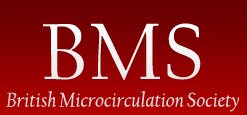 |
| www.thedailygreen.com |
Although it has long been recognised that different foods may affect the microcirculation it is only relatively recently that studies have begun to dissect the different mechanisms by which this occurs and take this information forward into clinical trials. Such foods include Cranberries and Blueberries, consumption of which results in absorption of both vitamins and anthocyanins, powerful anti-oxidants, into the blood stream. These anti-oxidants trigger relaxation of coronary arteries helping to prevent coronary heart disease, act as vascular protective agents in part by stabilising membrane phospholipids and help to maintain normal capillary structure in diabetic patients. Similarly, current research suggests that anti-oxidant vitamins and phytoestrogens found in soy can reverse impaired vascular relaxation in patients with diabetes and coronary heart disease.
Another group of plant anti-oxidants are the catechins, which are also found in blueberries and cranberries, as well as grapes, apples, red wine, tea and cocoa. Studies investigating consumption of cocoa rich in these anti-oxidant and anti-inflammatory catechins have demonstrated a significant increase in blood flow in cutaneous and subcutaneous tissue after both a single dose and regular consumption due to a vasodilatory effect. A greater number of studies have been carried out on green tea catechins, and especially epigallocatechin-3-gallate (EGCG), which is not present in black tea due to the differences in the manufacturing process. In contrast to the vasodilatory effect of catechins previously mentioned, these studies have shown that EGCG has anti-angiogenic activity inhibiting endothelial cell proliferation, chemotaxis and invasion, via inhibition of the VEGF pathway both by inhibiting VEGF production and by disruption of the VEGF-R2 complex. EGCG also has anti-tumour effects in animal studies, but has yet to be tested in a clinical trial in humans.
 |
| www.sisterearthorganics.wordpress.com |
A relative new comer to this increasing list of beneficial foods is the Brazil nut. These nuts have a complex composition different to other nuts and contain bioactive substances such as the anti-oxidant, Vitamin E; selenium, which acts as a co-factor for the anti-oxidant enzyme glutathione peroxidas;, mono and poly unsaturated fatty acids, which help to lower low density lipoproteins in the blood; magnesium; potassium; calcium; phenolic compounds and proteins. Following previous studies demonstrating a beneficial effect on endothelial cell function, a randomised control trial published this year in Nutrition and Metabolism has demonstrated that consumption of 3-5 Brazil nuts per day results in improved lipid profile, oxidative stress and microvascular function in obese adolescents. In summary, many different food types, especially fruit, beans, nuts and green tea, have beneficial effects on the microcirculation and although knowledge of the mechanisms by which these benefits are achieved are increasing, clinical trials are necessary to fully maximise their potential in patients with microcirculation defects. After all, consumption of food or drink may well be easier for many patients than taking prescribed medication.
By Dr Carolyn Staton


